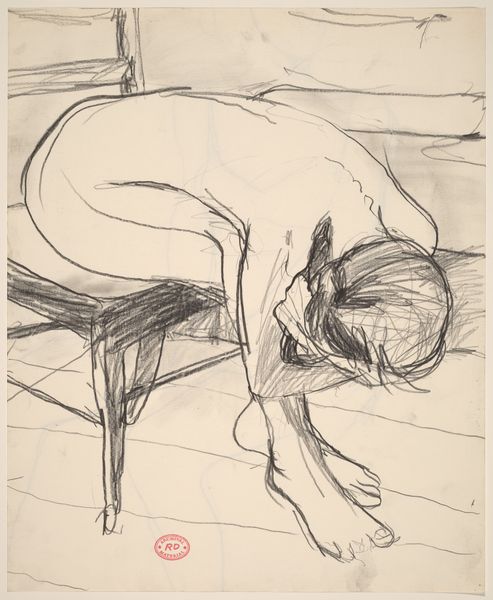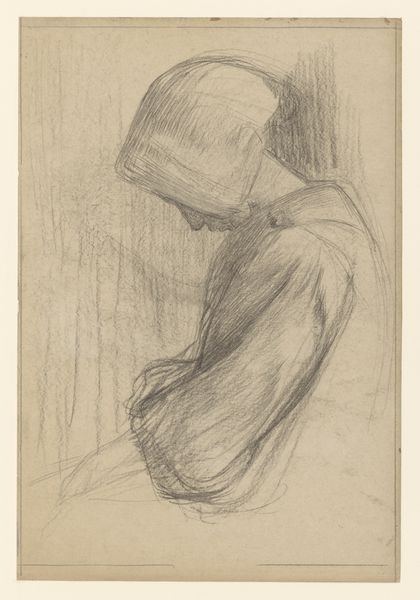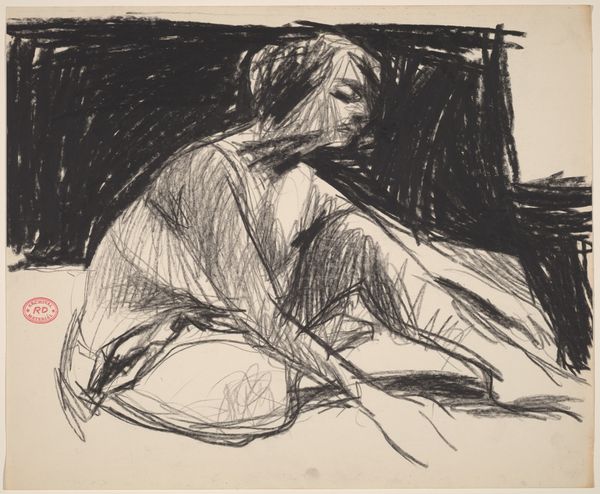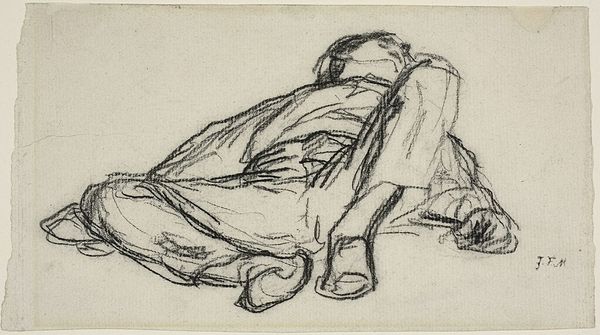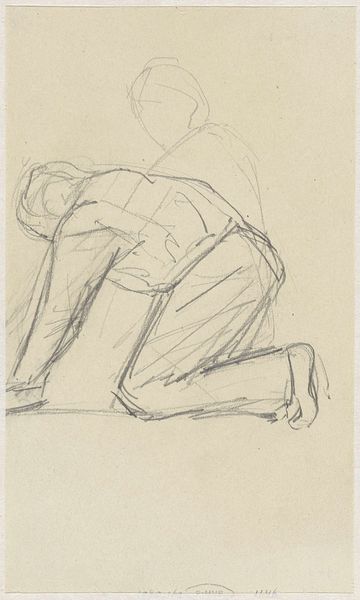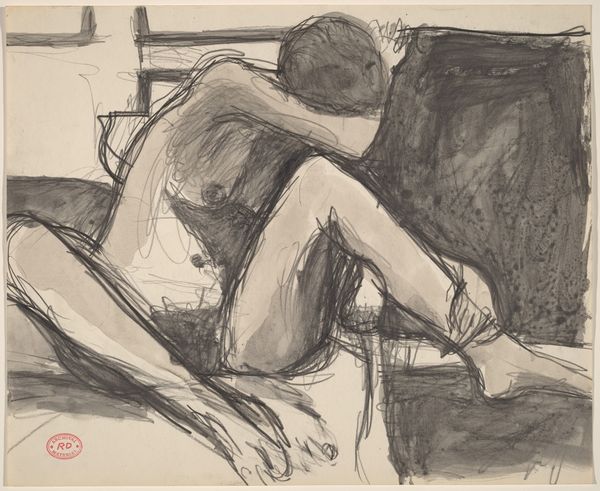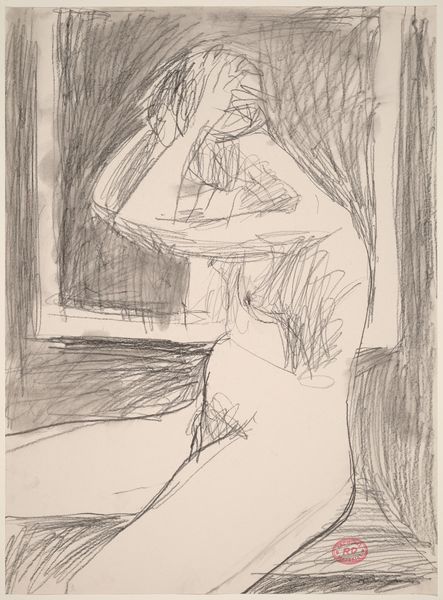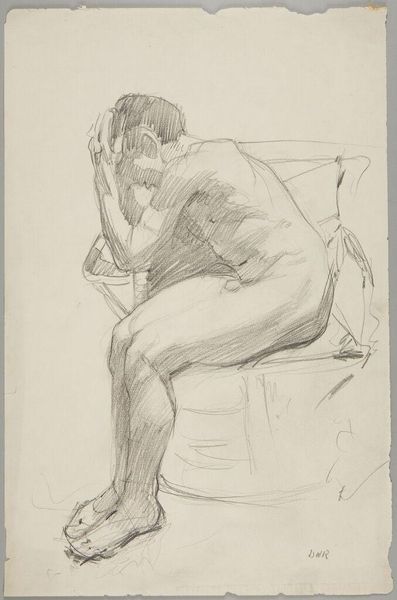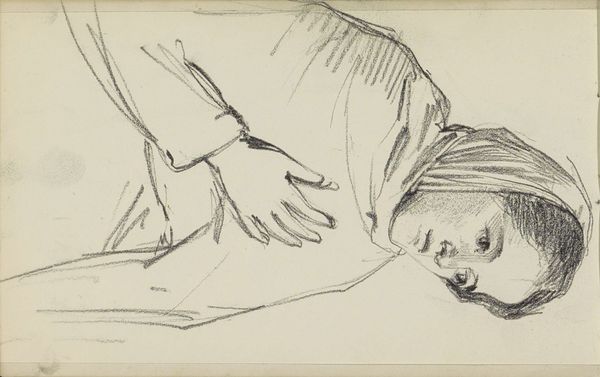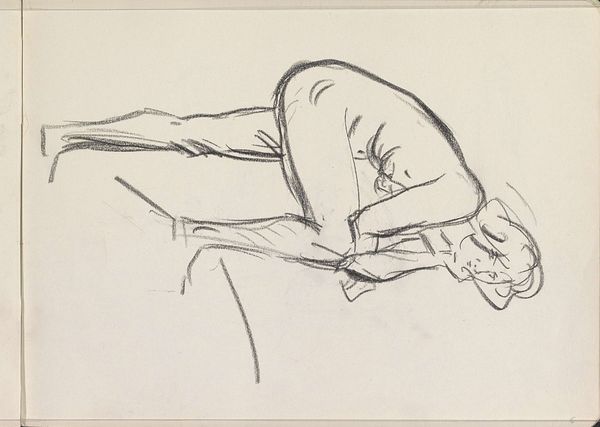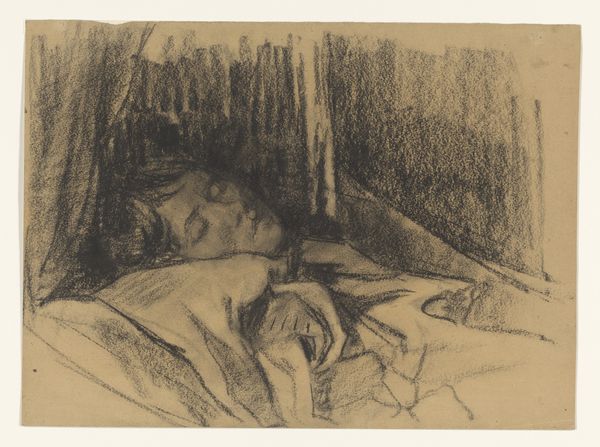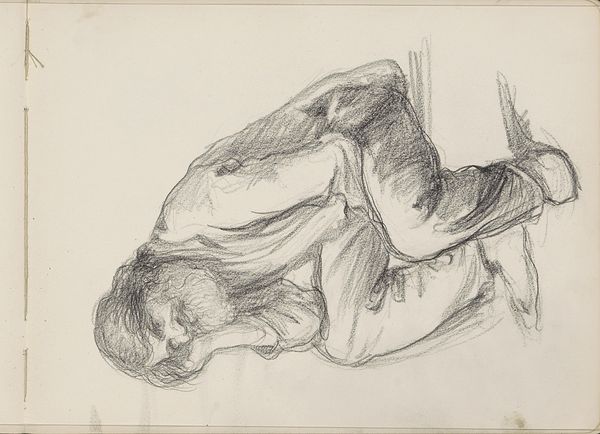
drawing, pencil
#
portrait
#
pencil drawn
#
drawing
#
figuration
#
pencil drawing
#
ink drawing experimentation
#
pencil
#
portrait drawing
Dimensions: 284 mm (height) x 205 mm (width) (bladmaal)
Editor: This is a pencil drawing from the 1930s, "Woman Reading Curled Up on a Sofa" by Henrik Schouboe. It's at the SMK. It feels very intimate and immediate, a captured moment. What strikes you about it? Curator: The use of pencil is central here. It democratizes the artistic process; it's accessible. We often see drawing as preparatory, a means to an end. But here, the artist presents it as the finished work. The paper itself is the ground of the image, and the marks made are a direct record of the artist’s hand and labour. How does that emphasis change our perspective? Editor: I guess it makes me think about how casually we might treat a sketch, versus a painting in oil. It also highlights the act of *making* the artwork. Curator: Precisely. And considering it was done in the 1930s, we might also consider the social context of making art. Was Schouboe critiquing traditional notions of labor? Did he seek an art that was intertwined with daily life? Consider the subject too: reading, itself an act of labor and self-improvement in many respects. Editor: That’s an interesting way to read it. The casualness combined with the skill makes it feel special. So instead of just seeing a woman reading, we're invited to think about the artist's process, the materials used, and the wider social landscape. Curator: Exactly. It challenges hierarchies of art-making and elevates the everyday, making us question what constitutes 'high art' and why. It forces us to engage with the raw materiality and artistic choices. Editor: Thanks, I now perceive how a humble pencil sketch opens to questions around labor and class. Curator: Likewise. It is nice to focus our attention on this more raw form and its larger implication.
Comments
No comments
Be the first to comment and join the conversation on the ultimate creative platform.
